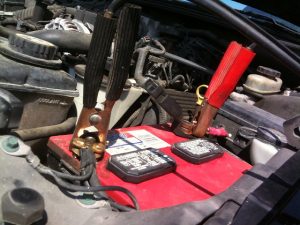Living in Canada means facing diverse weather conditions, from freezing winters to scorching summers. In this environment, your car battery plays a crucial role in ensuring your vehicle starts reliably. To avoid unexpected breakdowns and ensure optimal performance, it’s essential to know when to schedule maintenance for your car battery. Let’s explore the key considerations and signs that indicate it’s time to give your battery some attention.
Understanding the Lifespan of a Car Battery
Car batteries typically have a lifespan of three to five years, but this can vary based on factors such as climate, driving habits, and the type of battery. In the Canadian climate, where winters can be harsh, batteries may experience increased strain, potentially reducing their lifespan.
Signs Your Car Battery Needs Attention
1. Slow Engine Crank
If you notice that your engine is slow to crank or struggles to start, it’s a clear indication that your battery might be losing its charge. This can be especially noticeable during cold winter mornings when the engine requires more power to turn over.
2. Warning Lights on the Dashboard
Modern vehicles are equipped with advanced electronics that monitor various systems, including the battery. If you see a battery warning light on your dashboard, it’s a signal that your battery may be experiencing issues. Ignoring this warning can lead to more severe problems.
3. Dimming Headlights
Dimming headlights while idling or when using other electrical components like the air conditioner or radio can be a sign of a weakening battery. This indicates that the alternator is struggling to recharge the battery adequately.
4. Unpleasant Smell
A sulfurous or rotten egg smell near the battery could be a sign of a leak or other issues. If you notice this smell, it’s crucial to have your battery inspected promptly to prevent further damage.
5. Age of the Battery
As mentioned earlier, the typical lifespan of a car battery is three to five years. If your battery is approaching this age range, it’s wise to be proactive and consider scheduling maintenance, even if you haven’t experienced any noticeable issues.
When to Schedule Maintenance
Regular Inspections
Include your car battery in your routine vehicle inspections. This is particularly important before the onset of extreme weather conditions, such as winter, to ensure your battery is up to the task of handling increased demands.
Seasonal Check-ups
In Canada, where winters can be harsh, and summers scorching, it’s advisable to schedule seasonal check-ups for your car battery. Extreme temperatures can impact battery performance, and these check-ups can identify potential issues before they become critical.
Before Long Trips
If you’re planning a long road trip, especially during the winter, it’s a good idea to have your battery checked. Long drives and cold temperatures can place additional stress on your battery, so starting your journey with a fully charged and healthy battery is essential.
After a Jump Start
If you’ve recently had to jump-start your vehicle, it’s a sign that your battery may be struggling. While a jump start can get you back on the road, it’s crucial to address the underlying issue and have your battery tested and possibly replaced.
Following Warning Signs
If you’ve noticed any of the warning signs mentioned earlier, don’t delay. Schedule maintenance for your car battery promptly to prevent unexpected breakdowns and ensure reliable vehicle performance.
DIY Battery Maintenance Tips

Keep Terminals Clean
Over time, corrosion can build up on the battery terminals, affecting performance. Regularly clean the terminals using a mixture of baking soda and water, and ensure the connections are tight.
Check Fluid Levels
If you have a conventional lead-acid battery with removable caps, check the fluid levels regularly. Top up with distilled water if needed, but be cautious not to overfill.
Secure the Battery
Ensure that your car battery is securely mounted to prevent vibrations and potential damage. Loose batteries can lead to electrical issues and a shorter lifespan.
Conclusion
Scheduling maintenance for your car battery is a proactive step to avoid the inconvenience of unexpected breakdowns, especially in the challenging Canadian climate. By paying attention to warning signs, conducting regular inspections, and following DIY maintenance tips, you can ensure that your car battery performs optimally and reliably throughout its lifespan.
Remember, when it comes to your vehicle’s battery, prevention is key. Don’t wait until you’re stranded in a parking lot on a cold winter day – take the necessary steps to keep your battery in top condition, and your car will thank you with reliable starts and smooth journeys.




